Evaporative Emission Control System Purpose
The Evaporative Emission (EVAP) control system limits the fuel vapors from escaping into the atmosphere. The EVAP transfers the fuel vapor from the sealed fuel tank to an activated carbon (charcoal) storage device (EVAP canister). The EVAP canister stores the vapors until the engine is able to use the extra fuel vapor.
When the engine is able to use the extra fuel vapor, the intake air flow purges the fuel vapor from the carbon element, and then the normal combustion process consumes the fuel vapor.
The system is required in order to detect the evaporative fuel system leaks as small as 0.040 between the fuel filler cap and the purge solenoid. The system can test the evaporative system integrity by applying a vacuum signal (ported or manifold) to the fuel tank in order to create a small vacuum.
Operation
The control module then monitors the ability of the system to maintain the vacuum. If the vacuum remains for a specified period of time, then there are no evaporative leaks, and a PASS report is sent to the control module. If there is a leak, the system either will not achieve a vacuum, or a vacuum cannot be maintained. Usually a fault can only be detected after a cold start with a trip of sufficient length and driving conditions to run the needed tests. The enhanced evaporative system diagnostic conducts up to 8 specific sub-tests in order to detect the fault conditions. If the diagnostic fails a sub-test, the control module stores a diagnostic trouble code (DTC) in order to indicate the type of fault detected.
Evaporative Emission Control System EVAP Control System Discript.
The Enhanced Evaporative System Diagnostic is a precise series of 8 operational sub-tests on the system. In some cases, the failure of only one sub-test will end all evaporative system testing; however, in many cases, the on board system will conduct a series of sub-tests before storing any DTCs. A brief description of each of the sub-tests follows.
Excess Vacuum Test - Stage 1
During the normal purging of the EVAP canister, the vent valve is commanded open. During this time, the Control Module monitors the Fuel Tank Pressure Sensor for an excess vacuum. The vacuum could build too quickly if the vent valve or vent valve hoses are restricted. If this test fails, the EVAP diagnostic is completed for that trip and a DTC P0446 is stored. A P0446 would indicate a plugged vent solenoid, plugged vent filter, pinched vent line, or a bad tank vacuum sensor.
Loaded Canister Test
Important: This test can only report a PASS.
The Loaded Canister Test uses the oxygen sensor data or the fuel trim information in order to determine if the engine is purging large amounts of fuel vapor from the EVAP canister. If large amounts of fuel vapors are being purged, this indicates that the canister is at least 60 percent full and that the system is working properly. When this is the case, the EVAP diagnostics P0440, P0442, P0446 and P1441 pass for that trip and no further testing is done. If this test does not indicate sufficient canister loading, the Weak Vacuum Test runs.
Weak Vacuum Test - Stage 1
The Weak Vacuum Test runs only if the previous test did not report a PASS. For this test, the vent valve is commanded closed during normal purge operation. If sufficient vacuum does not developed, the diagnostic fails and the Control Module stores a DTC P0440. If a sufficient vacuum develops, the Small EVAP Leak Test runs. If the proper driving conditions are not met, this test will be bypassed.
Small EVAP Leak Test
Notice: This test may run up to 3 times prior to reporting a failure. A P0442 indicates a small leak anywhere between the fuel fill cap and up to but not including the purge solenoid.
The Small EVAP Leak Test runs immediately following a passing Weak Vacuum Test. While the vacuum is still present in the fuel tank, the vent valve and purge valve are both command closed in order to seal the system. With the system closed, the Control Module monitors the trapped vacuum in the system through the Fuel Tank Pressure Sensor. If the vacuum decay rate is too fast, a small leak is indicated and a DTC P0442 is stored. Otherwise DTC P0442 is passed and the Excess Vacuum Test - Stage 2 is run.
Excess Vacuum Test - Stage 2
Important: This test is the same as the Stage 1 Excess Vacuum Test except for different driving conditions under which the test is conducted.
This test allows the normal purging and commands the vent valve open. If a high amount of vacuum occurs, this indicates that a restriction has occurred in the canister vent or the canister vent valve. If an excessive vacuum develops, a DTC P0446 stores. If an excessive Vacuum does not develop, a DTC P0446 passes and the Purge Valve Leak Test runs.
Weak Vacuum Test - Stage 2
Important: This test enables the MIL on the next key up if a fail is reported and extinguishes the MIL on the next key up when a PASS is reported. When the MIL is extinguished, the executive also erases the freeze frame and the failure record buffer for this DTC (Check for a missing fuel fill cap). This test also runs on a hot start when all other are aborted if a prior failure exists.
This test is used in order to determine if the system can develop a sufficient vacuum. During a normal EVAP purging, the vent valve is commanded closed and the fuel tank pressure sensor is monitored by the Control Module. If sufficient vacuum is developed, a DTC P0440 passes; otherwise, the Enhanced Evaporative System diagnostic test ends.
Purge Valve Leak Test
The Purge Valve Leak Test runs only if there was a cold start this ignition, and the Weak Vacuum Test -Stage 1 test did not fail. This test monitors the purge valve for leaks. During the test both the vent and the purge valves close. If a vacuum develops, the purge valve is leaking and a DTC P1441 is reported.
Evaporative Emission Control System EVAP Components
Evaporative System Canister

The evaporative system canister, filled with charcoal pellets, stores the fuel vapors from the fuel tank. The engine vacuum purges the vapor canister during normal driving.
Fuel Tank Pressure Sensor
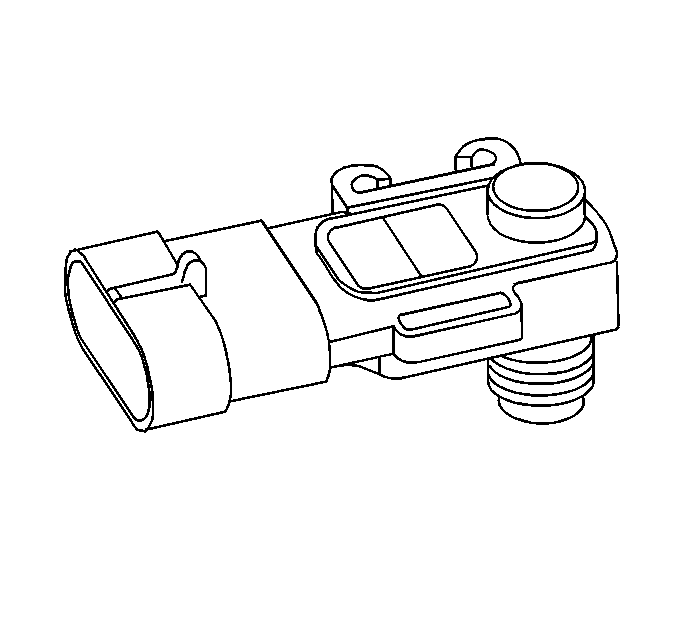
The Fuel Tank Pressure sensor is a 3 wire strain gauge sensor much like that of the common MAP sensor. However, this sensor has very different electrical characteristics due to its pressure differential design. The sensor measures the difference between the air pressure (or vacuum) in the fuel tank and the outside air pressure.
The sensor mounts at the top of the fuel tank sending unit. A three wire electrical harness connects it to the Control Module. The Control Module supplies a 5 volt reference voltage and ground to the sensor. The sensor sends a voltage between 0.1 and 4.9 volts. When the air pressure in the fuel tank is equal to the outside air pressure, such as when the fuel fill cap is removed, the output voltage of the sensor will measures 1.3 to 1.7 volts.
When the air pressure in the tank is 4.5 inches H2O (1.25 kPa), the sensor output voltage should measure 0.5 ± 0.2 volts. When there is neither a vacuum or a pressure in the tank, the sensor voltage should be at 1.5 volts at 14 inches H2O (-3.75 kPa) the sensor output voltage should be 4.5 volts ± 0.2 volts.
Evaporative Canister Purge Valve
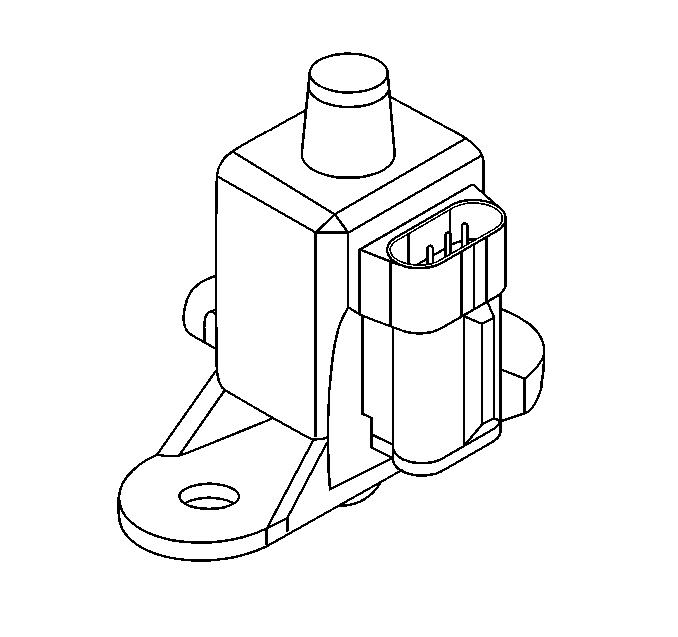
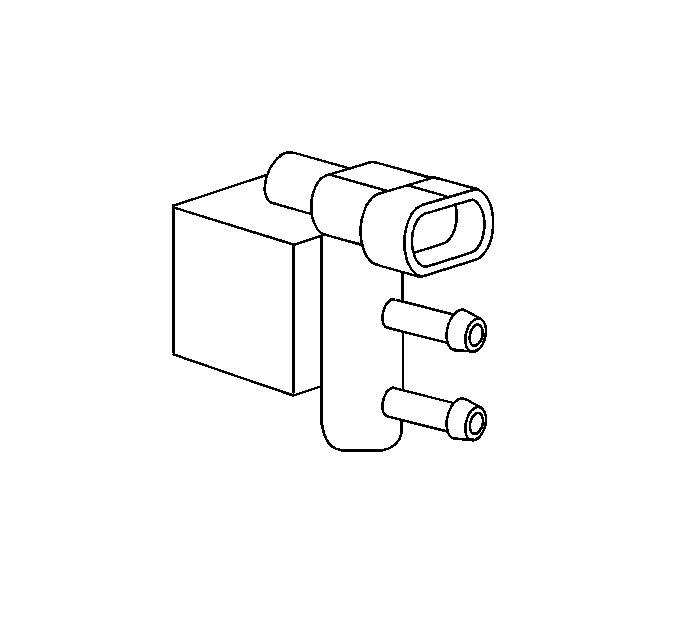
When energized, the evaporative Canister Purge Valve allows the fuel vapor to flow from the EVAP canister to the engine. The normally closed valve is pulse width modulated by the Control Module in order to precisely control the vapor flow. The valve opens during the Enhanced Evaporative Diagnostic Test in order to create a vacuum in the fuel tank and then closed in order to seal the system.
Evaporative Canister Vent Valve
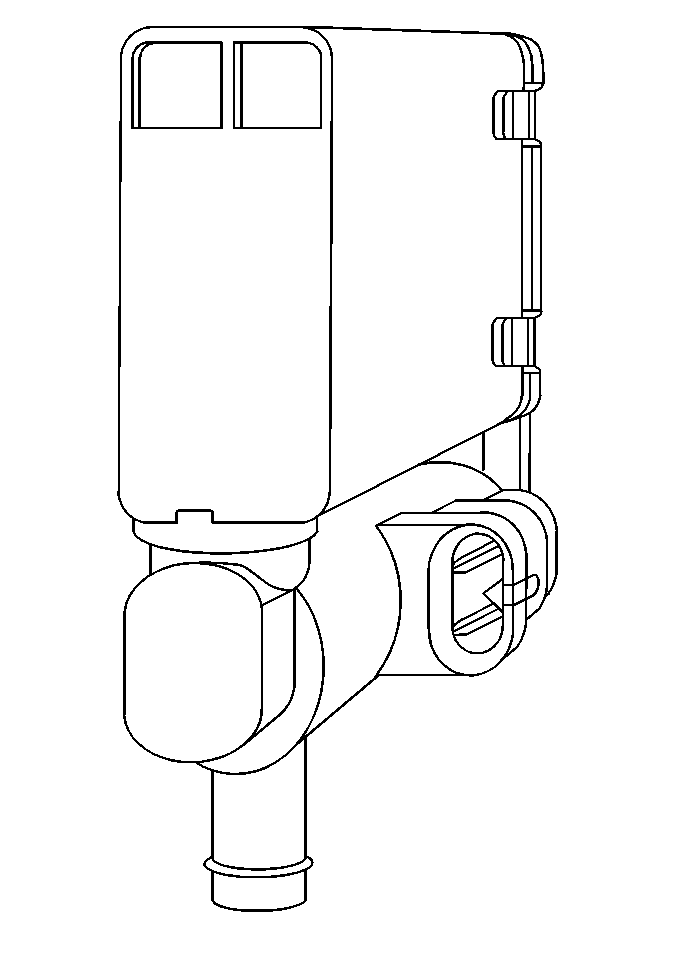
The Evaporative Canister Vent Valve replaces the fresh air vent used on the past EVAP canisters. The vent valve now not only allows the fresh outside air to the EVAP canister during the purge modes, but also allows the diagnostic to pull a vacuum on the fuel tank by closing the vent valve. This valve is normally open.
Evaporative System Service Port
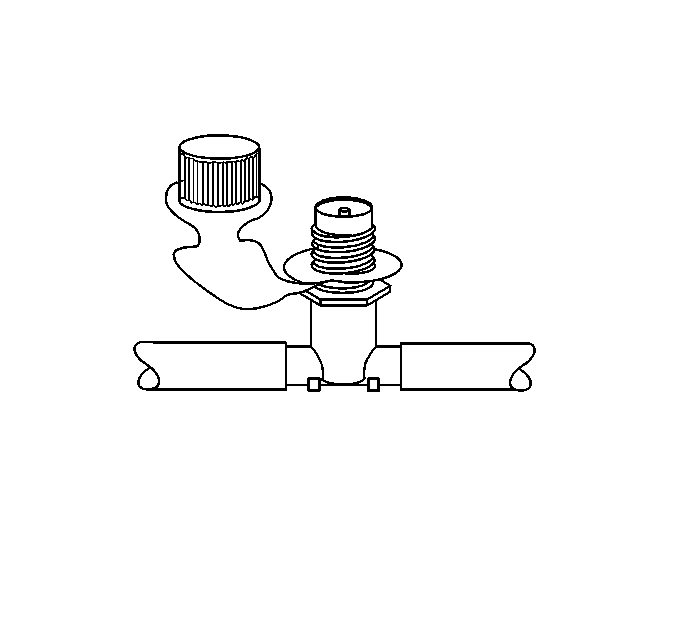
The Evaporative System Service Port is located in the evaporative hose located between the purge solenoid and the canister. The service port is identified by a green colored cap. The port contains a schrader valve and fittings in order to allow the connection of the service tool kit Enhanced EVAP Pressure Purge Diagnostic Cart J 41413.
Fuel Lever Sensor
The Fuel Lever Sensor is an important input to the Control Module for the enhanced evaporative system diagnostic. The fuel level information is needed for the Control Module to know the volume of the fuel tank. The fuel level affects the rate of charge in the air pressure in the EVAP system. Several of the Enhanced Evaporative System diagnostic sub-tests are dependent upon the correct fuel level information.
